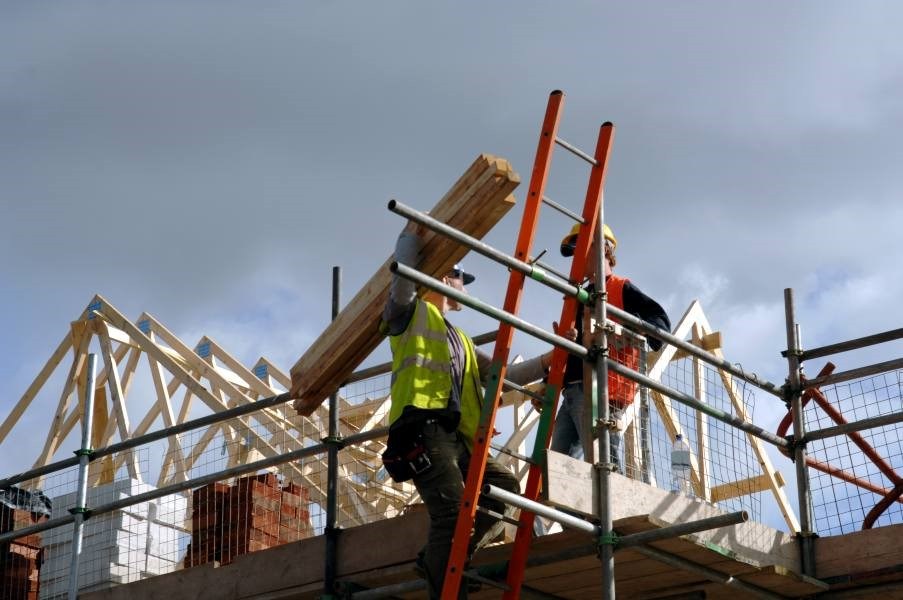Roofing Material Comparison: Choosing the Best Option for Your South Florida Home

Selecting the right roofing material is a significant decision for any property owner, especially in South Florida’s unique climate. From energy efficiency to durability, the roofing material you choose will impact the performance and appearance of your home. In this article, we’ll provide a detailed comparison of the most popular roofing materials to help you make an informed choice.
Metal Roofing
Overview:
Metal roofing is known for its durability and long lifespan. It’s a popular choice for both residential and commercial properties in South Florida due to its ability to withstand harsh weather conditions, including high winds and heavy rain.
Pros:
- Durability – Can last 40-75 years with proper maintenance.
- Energy Efficiency – Reflects sunlight, reducing cooling costs.
- Low Maintenance – Resistant to mold, mildew, and pests.
Cons:
- Cost – Higher upfront cost compared to other materials.
- Noise – Can be noisy during heavy rain unless proper insulation is used.
Cost:
Although metal roofing has a higher initial cost, its longevity makes it a cost-effective option over time.
For more information about metal roofing, visit Paul Bange Roofing.
Tile Roofing
Overview:
Tile roofing, typically made from clay or concrete, offers a classic look and is highly durable. It’s well suited to South Florida’s climate, providing excellent resistance to fire and strong winds.
Pros:
- Longevity – Can last 50+ years with minimal maintenance.
- Aesthetic Appeal – Available in various colors and styles
- Fire Resistance – Non-combustible, making it a safe option.
Cons:
- Weight – Requires additional structural support due to its heaviness.
- Cost – Higher installation costs due to the material and necessary support.
Cost:
Tile roofing is one of the more expensive options, but its durability and aesthetic appeal can justify the investment.
Shingle Roofing
Overview:
Shingle roofing is a versatile and cost-effective option, especially for residential properties. Asphalt shingles are the most common type, known for their ease of installation and variety of colors and styles.
Pros:
- Affordability – Lower upfront costs compared to other materials.
- Variety – Available in many colors and textures to match any home style.
- Ease of Repair – Individual shingles can be replaced easily if damaged.
Cons:
- Lifespan – Typically lasts 15-30 years, shorter than other materials.
- Susceptibility to Damage – Can be affected by high winds and extreme heat.
Cost:
Shingle roofing is one of the most affordable options, making it a popular choice for budget-conscious homeowners.
Click here for more information about shingle roofing.
Built-Up Membrane Roofing
Overview:
Built-up roofing (BUR) is a common choice for flat roofs. It consists of multiple layers of bitumen and reinforcing fabrics. It’s a durable option that provides excellent waterproofing.
Pros:
- Durability – Can withstand heavy foot traffic and harsh weather.
- Waterproof – Provides a strong barrier against water infiltration.
- Low Maintenance – Requires minimal upkeep once installed.
Cons:
- Installation Time – It takes longer to install compared to other roofing types.
- Weight – The multiple layers add weight to the roof structure.
Cost:
BUR is moderately priced, offering a good balance between cost and durability.
For more information about MUR, click here.
TPO Roofing
Overview:
Thermoplastic Olefin (TPO) roofing is a single-ply membrane that is popular for commercial buildings with flat roofs, known for its energy efficiency and ease of installation.
Pros:
- Energy Efficiency – Reflects UV rays, reducing cooling costs.
- Ease of Installation – Lightweight and flexible, making it easy to install.
Cons:
- Newer Material – Less long-term data available compared to other roofing materials.
- Vulnerability to Punctures – While durable, sharp objects can damage TPO.
Cost:
TPO roofing is cost-effective, offering good durability and energy savings at a reasonable price. For more information about TPO roofing, click here.
Flat/Tapered Roofing
Flat and tapered roofing systems are commonly used for commercial buildings. They offer a sleek, modern look and are often paired with materials like TPO or BUR for added durability.
Pros:
- Aesthetics – Provides a clean, modern appearance.
- Space Utilization – Flat roofs can be used for outdoor spaces or HVAC systems.
- Cost-Effective – Generally less expensive than sloped roofing.
Cons:
- Water Damage – Requires proper drainage systems to prevent water from pooling.
- Maintenance – Needs regular maintenance to prevent leaks.
Cost:
The cost of flat roofing varies depending on the material used, but it is generally affordable for commercial properties.
To learn more about flat/tapered roofing, click this link.
Comparing Roofing Options
When choosing the right roofing material, consider factors such as cost, durability, and maintenance requirements. Here’s a quick comparison:
- Durability – Metal and tile roofs offer the longest lifespan.
- Cost – Shingle and flat roofs are generally the most budget-friendly.
- Maintenance – Metal and TPO roofs require the least maintenance.
- Energy Efficiency – Metal and TPO roofs are the most energy-efficient options.
Roofing Material Costs
Understanding the cost of each roofing material can help you budget for your roofing project. While some materials like metal and tile have higher upfront costs, their longevity, and low maintenance needs can make them more economical in the long run.
Choosing the Right Roofing Material
Selecting the right roofing material depends on your specific needs and budget. Consider the following when making your decision:
- Climate Suitability – Choose materials that can withstand South Florida’s heat and humidity.
- Building Type – Some materials are better suited for residential properties, while others are ideal for commercial buildings.
- Aesthetic Preferences – Ensure that the roofing material chosen complements the style of your home or commercial building.
Conclusion
Choosing the best roofing material for your South Florida property is easier with expert guidance. Paul Bange Roofing offers a wide range of roofing materials and professional installation services tailored to your needs. Whether you’re looking for durability, affordability, or energy efficiency, we have the right solution for you.
Call to Action
Are you ready to choose the perfect roofing material for your property? Contact Paul Bange Roofing for expert advice and professional services. For over 30 years, we have served residents and business owners alike with quality roofing, affordable prices, and outstanding customer service. The level of high-quality workmanship we bring to each job site is unparalleled, and all our work comes with a 100% customer satisfaction guarantee. In addition, your roofing job will be backed by a lifetime warranty via membership in our Overhead Care Club. Whether you need a roof for your small warehouse or large estate home, you can trust us to handle the job with careful precision. We show up on time, fulfill any promises made, and work hard to make sure that everything is done right the first time. If you are in need of a roofer, if you’d like to request a free estimate, or if you just want some information about our company, contact us or visit our website.





